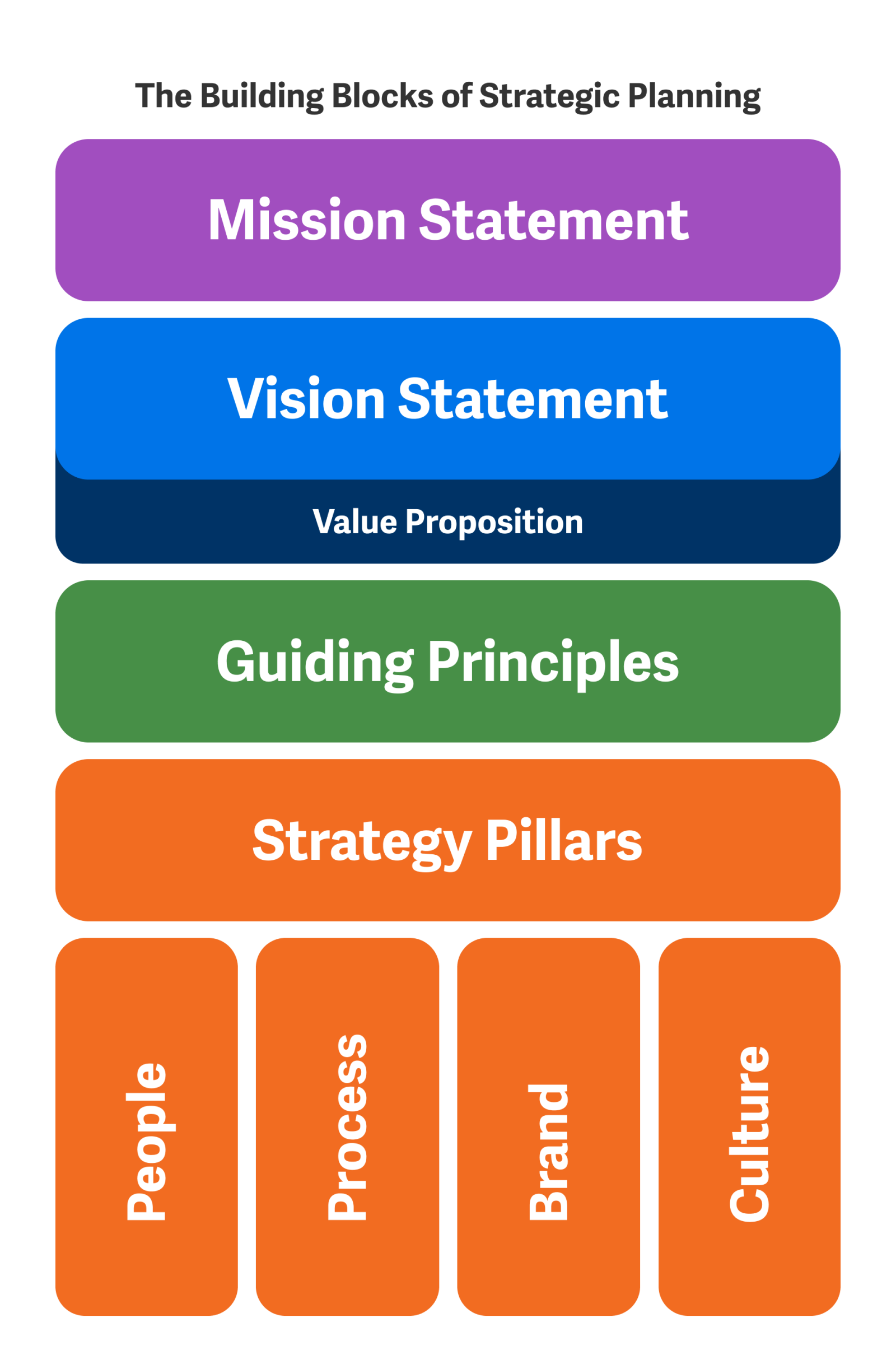Strategic Planning: Finding and Defining Your Strategic Intent for Your Internal Audit Team

In the first two blogs of this series, we covered developing the vision and mission statements along with guiding principles of a strategic plan. Now we’ll turn our focus to our strategic intent.
Strategic intent is articulated in what I like to refer to as the four fundamental strategy pillars:
- People. The people pillar defines strategies related to how you acquire, retain, develop, and sustain your talent pipeline.
- Process. The process pillar defines strategies related to how you conform with professional standards, select and develop engagement methodologies, ensure quality, and acquire and deploy technology/innovation. Strategies for funding your vision and mission are also included in this pillar.
- Brand. The brand pillar defines strategies for creating demand for your service, improving customer experience, developing influence, and identifying growth opportunities (e.g., emerging risks).
- Culture. The culture pillar defines strategies for actively managing and nurturing a culture that supports your vision and mission. This pillar is heavily influenced by guiding principles.
These four strategy pillars focus your strategic plan on what matters most for success. Perhaps your four pillars will differ slightly, but in my experience, they are foundational. Your vision and analysis of each pillar drive their specific elements. A great way to analyze your current state and identify particular strategies is to perform a SWOT analysis for each pillar. If you aren't familiar with SWOT analysis, it stands for strengths, weaknesses, opportunities, and threats. SWOT analysis is a simple exercise that identifies the good (strengths and opportunities) of your current state along with the bad (weaknesses and threats).
Armed with this analysis, you can begin to plot the strategic course that will exploit your strengths and opportunities and respond to weaknesses and threats to ensure your vision is achieved.
Your strategic plan: putting it all together
For simplicity's sake, there are four building blocks to this strategic planning roadmap:
-
Vision statement
-
Mission statement (including value proposition)
-
Guiding principles
-
Strategy pillars
For those who may be new to strategic planning, the model presented in this paper reflects a guide for getting started (which is often the most challenging part of any new endeavor). If this model resonates with you, take it and make it your own. As with any model or framework, certain elements may not fit what you are trying to achieve. Get creative with it. Make changes and adjustments as you see fit.
As a final note, I have taken a couple of different approaches to get started with strategic plans. One approach is to involve your team and collaboratively develop your strategy. This approach can make the team feel their voice is heard, and the strategy reflects their own ideas. But I have found that the process tends to get bogged down and results in a strategic plan with a hodgepodge of mixed ideas that lack cohesion. Another approach is to go it alone and develop the whole strategic plan yourself. The obvious challenge here is gaining buy-in from a team that had no say in the matter.
For me, the approach that has resulted in the best outcome is a mix of the two. Strategic plans should reflect leadership, but they should also include the input of your team. Without buy-in, the best strategic plan will ultimately fail. I suggest that leaders guide the strategic planning effort by constructing a skeleton version with a clearly articulated vision as the starting point. From there, solicit feedback from the team, especially as it relates to your guiding principles. Taking this hybrid approach will more likely result in a strategic plan that is embraced by the whole team with enthusiasm. It's also more likely to be cohesively aligned from vision through strategy pillars.
The times, they are a-changing
For most of my tenure as an internal auditing professional, our role has been secure, and our value proposition has remained viable. But the world is changing. Everything about the world we live and work in is growing increasingly sophisticated, more complicated, and riskier. Our value proposition as an internal auditing profession has never been more compelling. But we will only be able to stay relevant in a dynamic world if we evolve and change ourselves. I believe that a sound, thoughtful strategic plan for internal auditing functions isn't an option anymore. It is an imperative.
From Traditional to Transformative: The Complete Guide to Self-Driving Work
Self-driving work is changing the game, empowering teams to eliminate menial tasks, reduce risk, and fuel growth. This e-book breaks down how automation through self-driving work can transform traditional processes to scale.



